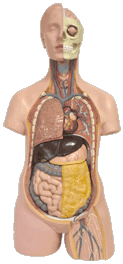At WiseGEEK, we're committed to delivering accurate, trustworthy information. Our expert-authored content is rigorously fact-checked and sourced from credible authorities. Discover how we uphold the highest standards in providing you with reliable knowledge.
What Factors Affect Niaspan® Dosage?
Niaspan® dosage depends on how well a patient responds to this cholesterol-altering medication. Men tend to need higher doses than women, and some patients respond very well to low dose therapy while others need higher doses. This medication must be titrated, meaning that the patient starts on a low dose and slowly increases under medical supervision. Once the patient has reached an effective dose, further increase should not be necessary.
This medication can raise concentrations of high density lipoprotein, also called good cholesterol or HDL, and lowers that of low density lipoprotein, also called bad cholesterol or LDL. It is designed to be used in conjunction with dietary changes and may be given alongside other drugs. While patients are on Niaspan®, they can be at risk of side effects, and it is important to report symptoms to a care provider.

A typical starting Niaspan® dosage is 500 milligrams a day. The patient needs to take the medication in the evening with a low fat snack, and should swallow the tablets whole. Taking it on an empty stomach is not recommended. After four weeks on this dose, the patient can start taking 1,000 milligrams a day. Patients can take the drug for another four weeks, at which point they can be tested to see if they are responding to the Niaspan® dosage.
Patients who appear to achieve cholesterol control at this dose can usually stay there. In other cases, it is sometimes necessary to keep titrating up. The Niaspan® dosage should not exceed 2,000 milligrams in total, and patients shouldn’t attempt to increase the dosage by more than 500 milligrams in a four week period. This can reduce the risk of side effects like stomach upset, coughing, and itching while patients adjust to the medication. If these symptoms do not go away or get worse, it may be necessary to consult a doctor.
It is important to take note of the Niaspan® dosage recommended by a care provider and to make sure this information is accurately recorded in patient charts. If patients need to take other medications, they could be at risk of interactions or conflicts, and it’s important to know which drugs they take and at what dosage. Pharmacists maintain records on their patients and can quickly check for conflicts when patients start new prescriptions or have concerns about over the counter drugs. If a strange drug interaction occurs on any Niaspan® dosage, the patient can report it to a drug database for future reference.
AS FEATURED ON:
AS FEATURED ON:










Discuss this Article
Post your comments